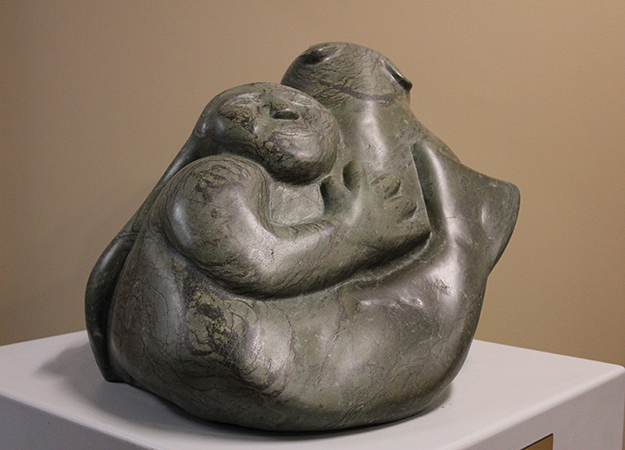Inuit artist continues to shine at Health Sciences Centre

'Sedna (Women's Spirit) with Polar Bear' (1972), a stone sculpture by Inuit artist Kenojuak Ashevak, who died Jan. 8. The work is currently on display in the Health Sciences Centre.
A stone sculpture in the Health Sciences Centre stands as a lasting tribute to pioneering Inuit artist Kenojuak Ashevak.
“Sedna (Women’s Spirit) with Polar Bear” (1972) is part of the legacy left by Ashevak, who died Jan. 8 at the age of 85. The work is currently on loan to the University from a local family.
Considered an early master of Inuit art, Ashevak was born in 1927 at a hunting camp on southern Baffin Island, and lived a traditional Inuit life during her early years. Later, in the tiny community of Cape Dorset, she played a key role in the birth of Inuit printmaking.
In 1958, she was approached by author and fellow artist James Houston, who encouraged Inuit artists to view their work as a source of income. Houston noticed a design Ashevak had produced on a sealskin bag and asked her to draw it. It later became her first print.
Ashevak was immediately successful as a commercial artist, and her decorative prints have become some of the most recognizable art in the country. Her best-known print, “The Enchanted Owl,” was used on a 1970 Canada Post stamp.
Ashevak garnered numerous awards throughout her life, including being named an Officer of the Order of Canada in 1967 – later promoted to Companion of the Order of Canada in 1982.
“Sedna (Women’s Spirit) with Polar Bear” is located at the entrance to the administration area of the Faculty of Health Sciences, located in the Health Sciences Centre.


